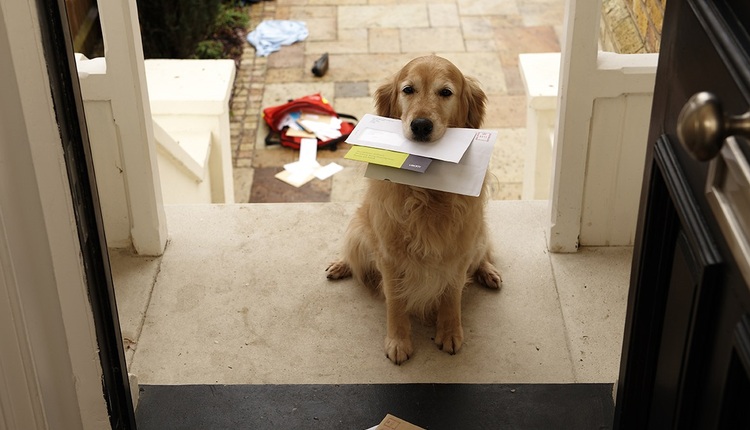By helping clients implement best practices for higher-value communications — such as making mail more colorful, interactive, engaging and integrated with digital communications — leading mail service providers are turning their customers’ bills, statements, and direct mail into powerful marketing tools. This is enabling them to have a different kind of conversation with their clients — one that appeals to the marketing influences that often shape a client’s buying decision.
In today’s physical and digital world, personalizing the customer experience is an essential part of any successful engagement strategy. Mail service providers should encourage their clients, in particular marketers, to reinvent physical communications to make them more engaging and to leverage data analytics to make communications more relevant.
Effective Utilization of Colorful Print Mail
Research shows that colorful print mail can boost open rates of up to 70%. Employing high-quality, dynamic color printing capabilities can add value to every mail piece and advanced inkjet color with variable data printing leads to impactful communications and can extend marketing reach. In fact, inkjet systems have transformed print and mail markets by printing at a compelling cost with speed and quality that is highly productive.
Inkjet systems typically require extremely high volume print jobs to be most effective. However, recently introduced systems for medium and small volume levels are making inkjet more affordable and attainable.
Leverage the Outside of the Envelope
When using color, it’s important to think about the outside envelope as well. The logo or graphic printed on the front of the envelope strongly influences when and whether people open it. Adding colorful, relevant information to the outside of the envelope can double open rates.
In fact, a study conducted by Leflein Associates of Ringwood, New Jersey showed that participants were more likely to open a mail piece with color text and graphics on the front before opening pieces with no headline or graphic. Given a choice of color graphics or black and white text, participants indicated they were 247% more likely to open envelopes with color graphics first. Fifty-seven percent of participants indicated they hardly ever noticed what was printed on the back of the envelope when sorting through or opening their mail. However, as with the front of the envelope, the study indicated that the presence of color text and graphics on the back was significantly more likely to influence their decision than black and white only.
In this new print-to-mail environment, where inkjet technology delivers the speed, print quality and per piece affordability that mailers demand, organizations have the opportunity to create dynamic mail envelopes and reduce expenses at the same time. Additionally, organizations can eliminate the need for pre-printed forms and envelopes and are able to produce more engaging, colorful mailings for clients.
Tap Into Transactional Mail
Colorful mailings can come in many forms. Monthly bills and statements are often a valuable yet untapped marketing resource. Over 20 billion billing statements were mailed to US consumers in 2013 (the most recent year for which statistics are available).
Many customers (typically 60-90% depending on the industry) continue to request printed statements. In fact, a recent study found that 84% of people believe they understand information better when they read print on paper. Furthermore, the US inspector general’s office analyzed three consecutive months of 2014 billing data for a major utility company and found that 91% of customers chose to receive their statements by mail.
The content and design of bills and statements is critical to reducing customer confusion. The right content and design can also have a positive financial impact by lowering call center expenses and helping ensure the business is paid on-time. Similarly, document design is critical to maximize the impact of the transactional mail piece and use it to deliver timely, relevant and personalized marketing messages. The right balance of white space, color and shading is important to highlight key information.
Organizations can also include targeted cross-sell opportunities with bills. Service providers and in-house shops that add revenue-generating cross-sell offers to statements often double response rates.
Make Communications Relevant through Analytics
Successful marketers use data analytics to create a complete 360-degree view of their customers and tailor the customer experience to their customers’ preferences and tendencies.
For example, leading mobile telecom companies are monitoring their customers’ phone and Internet usage to provide more competitive rates and relevant offers. To help mitigate the impact of “bill shock” — a motivating factor that leads many consumers to switch carriers — these companies are using their data centers to warn consumers via text messages when they have exceeded their calling and data limitations. In the same billing cycle, they then use that information to print relevant offers directly on the bill, or billing envelope to encourage the consumer to move to a more suitable plan.
Forward-looking companies are combining video technology with real-time data to deliver customers’ billing statements, providing a sound and motion experience with the physical statement. In some cases they are including on the statement a link to a personalized interactive video (PIV) that uses real-time data to highlight an opportunity. Software can transform data and information in real-time into engaging two-way opportunities, allowing one to grow sales and streamline service with real-time video content that customers will want to watch.
Integrate with Other Mediums
Physical mailings should also be fully integrated with digital channels, including websites, customer emails, mobile applications and social media to tell a consistent, personalized communications strategy across the entire customer experience.
It has been proven time and again that combining digital and physical communications increases response rates and ROI. A recent InfoTrends study found that response rates increase 45% when direct mail is combined with a landing page, email address and mobile marketing.
Within this hybrid mix of communications, postal optimization continues to be vital. Still, as postage is the single biggest cost of physical communications, it is key for organizations to harness innovation that can streamline the print/insert/sort process to uncover postal savings and ultimately build a world-class physical and digital customer engagement model.
Grant Miller is global vice-president of operations and product management at Pitney Bowes.







![ThinkstockPhotos-482364649 [Converted]](https://cms-static.wehaacdn.com/mailingsystemstechnology-com/images/ThinkstockPhotos-482364649--Converted-.564.widea.0.jpg)




